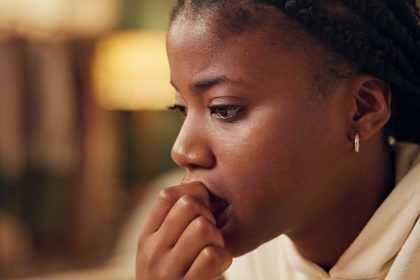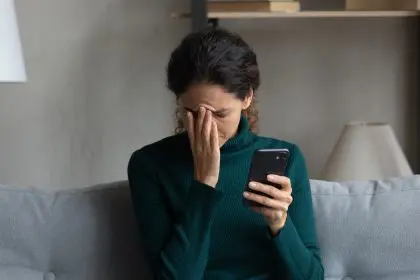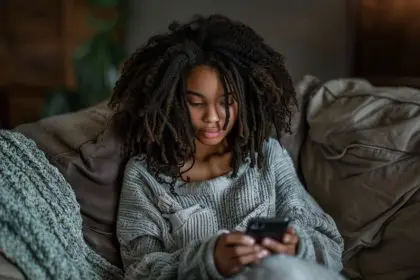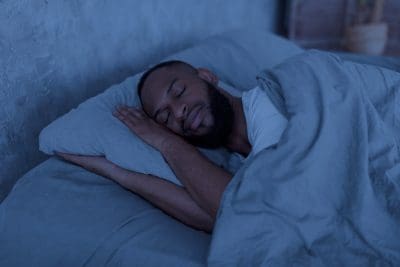The bedtime ritual has evolved dramatically in recent years. Instead of closing a book before turning out the lights, nearly half of Americans now scroll through social media, stream another episode, or browse websites while tucked under the covers. This seemingly harmless habit has captured the attention of sleep researchers, who have uncovered concerning connections between nighttime screen use and diminished sleep quality.
A groundbreaking new study published in Frontiers in Psychiatry examined over 45,000 young adults aged 18 to 28, revealing just how significantly screens impact our sleep patterns. The findings offer compelling evidence that the glow of electronic devices might be costing us more than we realize in terms of rest and health.
For anyone who regularly falls asleep to Netflix or checks Instagram one last time before bed, these research insights provide crucial information about how screens affect sleep architecture and what can be done to reclaim better rest.
Each screen hour costs 24 minutes of precious sleep
The mathematics of screen time and sleep loss prove surprisingly consistent. Research reveals that for every hour spent engaged with screens while in bed, participants lost approximately 24 minutes of sleep. This formula creates a troubling equation for regular nighttime screen users.
Consider a typical scenario: someone who spends two hours watching videos before attempting to sleep loses nearly 50 minutes of rest. Over the course of a week, this adds up to nearly six hours of lost sleep—essentially an entire night’s worth. For young adults already experiencing inadequate sleep due to academic, social, and work demands, this additional loss compounds existing sleep debt.
The cumulative effect becomes particularly concerning when viewed over extended periods. Chronically losing even 30 minutes of sleep each night eventually leads to significant sleep deprivation, affecting numerous bodily systems and cognitive functions. This finding suggests that seemingly minor screen habits can inflict substantial sleep damage over time.
Insomnia risk jumps 59% with each screen hour
Beyond simply reducing sleep duration, screen time dramatically increases the likelihood of developing insomnia. The research indicates a 59% higher risk of insomnia symptoms for each additional hour spent on screens while in bed. This means someone engaging in two hours of bedtime screen use more than doubles their chances of struggling with insomnia compared to those who avoid screens.
Insomnia manifests as difficulty falling asleep, staying asleep, waking too early, or experiencing non-restorative sleep despite adequate opportunity for rest. These symptoms can persist even when a person spends the recommended seven to nine hours in bed, resulting in poor sleep quality regardless of duration.
This distinction proves particularly important, as many people incorrectly assume they’re getting sufficient sleep simply because they spend enough time in bed. In reality, screen use may be compromising sleep quality even when duration appears adequate on the surface.
All screen activities disrupt sleep equally
Previous research suggested certain screen activities might impact sleep more negatively than others, with social media often singled out as particularly harmful. However, recent findings challenge this assumption, showing remarkably consistent effects across all forms of screen engagement.
The study categorized screen usage into six activities: watching movies or TV shows, checking social media, surfing the web, listening to audio content, playing video games, and reading coursework. Regardless of the specific activity, the negative impact on sleep remained consistent, suggesting the problem lies with screen exposure itself rather than particular content types.
This universal effect likely stems from multiple factors, including blue light exposure, psychological stimulation, and the displacement of healthier sleep routines. The finding carries significant implications for those who believe certain screen activities might be “safer” before bed than others.
The cumulative health toll extends beyond fatigue
Sleep deprivation rarely exists in isolation. Research consistently shows that chronic sleep insufficiency contributes to numerous serious health conditions, creating a cascade of physiological and psychological problems that extend far beyond simply feeling tired.
Regular insufficient sleep increases the risk of cardiovascular issues, including heart disease and high blood pressure. Metabolic disruptions occur as well, elevating diabetes risk through altered glucose metabolism and insulin sensitivity. Cognitive function suffers significantly, with attention, memory, and decision-making abilities all showing measurable declines after even moderate sleep loss.
Mental health remains particularly vulnerable to sleep disruption. Insufficient sleep correlates strongly with increased anxiety, depression, and mood dysregulation. For young adults already navigating challenging life transitions, these additional mental health burdens can prove particularly problematic.
The immune system also operates suboptimally without adequate sleep, increasing susceptibility to infections and prolonging recovery times. This comprehensive health impact makes addressing screen-related sleep disruption a meaningful public health concern rather than simply a matter of feeling more rested.
Demographic patterns reveal universal vulnerability
While the landmark study focused primarily on young adults in Norway, similar patterns emerge across various age groups and populations worldwide. Researchers believe these findings likely apply broadly, with screens disrupting sleep through consistent biological and psychological mechanisms regardless of demographic factors.
Young adults may face particular vulnerability due to their higher rates of electronic device usage and social media engagement. However, evidence suggests children, adolescents, and older adults all experience comparable sleep disruptions from nighttime screen exposure, adjusting for their baseline usage patterns.
Some research indicates women may report slightly higher rates of sleep disruption from screens than men, though the fundamental mechanisms affecting sleep appear consistent across genders. Cultural and socioeconomic factors influence screen usage patterns but don’t seem to significantly alter how screens impact sleep physiology once exposure occurs.
These universal effects highlight how human sleep biology remains fundamentally similar across populations, with all groups showing sensitivity to the stimulating effects of screens before bedtime.
The bedroom environment matters significantly
Environmental context plays a crucial role in determining how screens affect sleep. Research indicates that using devices specifically while in bed creates stronger associations between the sleep environment and wakefulness, essentially training the brain to remain alert rather than prepare for sleep when entering the bedroom.
This finding explains why using identical devices in other locations shortly before bedtime, while still somewhat disruptive, produces less dramatic sleep interference. The bed itself ideally serves as a powerful cue for sleep onset, but this association weakens when regularly paired with stimulating activities.
Sleep scientists emphasize the importance of maintaining the bedroom primarily for sleep and intimacy, keeping work, entertainment, and digital activities confined to other spaces. This environmental separation helps preserve healthy sleep cues that support faster sleep onset and improved sleep quality.
For those living in limited spaces where the bedroom serves multiple functions, using physical dividers or creating designated areas within the room can help maintain some separation between sleep and screen activities.
Practical strategies restore healthy sleep patterns
While the research paints a concerning picture of screen time’s impact on sleep, practical solutions exist to mitigate these effects. Implementing evidence-based sleep hygiene practices can significantly improve rest quality even for those previously entrenched in screen-heavy bedtime routines.
The most effective approach involves establishing a complete screen-free bedroom. Charging devices in another room eliminates both the temptation to check them and exposure to sleep-disrupting notification lights. For those relying on phone alarms, investing in a dedicated alarm clock provides a simple alternative without the drawbacks of keeping phones nearby.
Creating a consistent, relaxing pre-sleep routine without screens helps signal to the body that sleep approaches. Reading physical books, practicing gentle stretching, or enjoying calming music can replace screen activities while promoting natural drowsiness. Experts recommend transitioning away from screens at least 30 minutes before intended sleep time, though longer periods provide additional benefits.
For individuals who experience difficulty falling asleep, remaining in bed while awake can exacerbate sleep problems. Instead, getting up and engaging in quiet, non-screen activities until drowsiness returns helps prevent negative associations between bed and wakefulness. This strategy, while counterintuitive, often proves more effective than lying awake frustratedly checking the time.
If circumstances absolutely require using screens close to bedtime, doing so while sitting in a chair or on a couch rather than in bed can minimize disruption to sleep associations. Additionally, most devices now offer blue light filtering features that reduce some of the wavelengths most disruptive to melatonin production when enabled.
Implementing even a few of these strategies can begin restoring healthier sleep patterns, with benefits typically becoming noticeable within days or weeks of consistent practice. The research suggests that prioritizing screen-free sleep environments represents one of the most immediately actionable steps individuals can take to improve their sleep quality and overall health.















